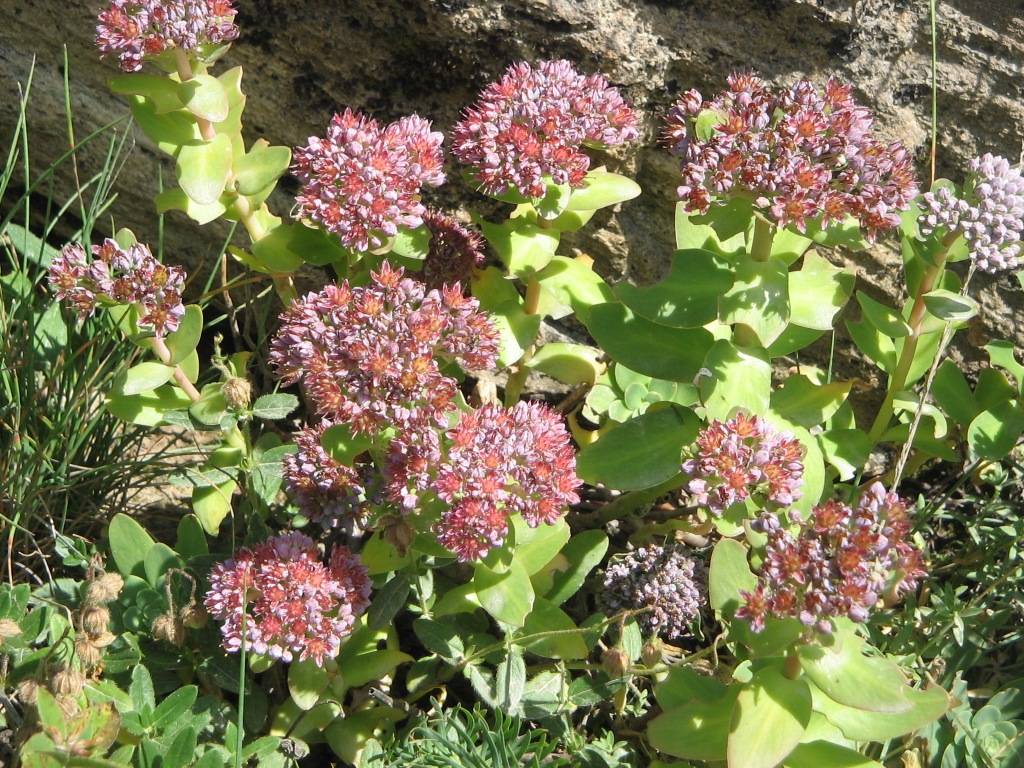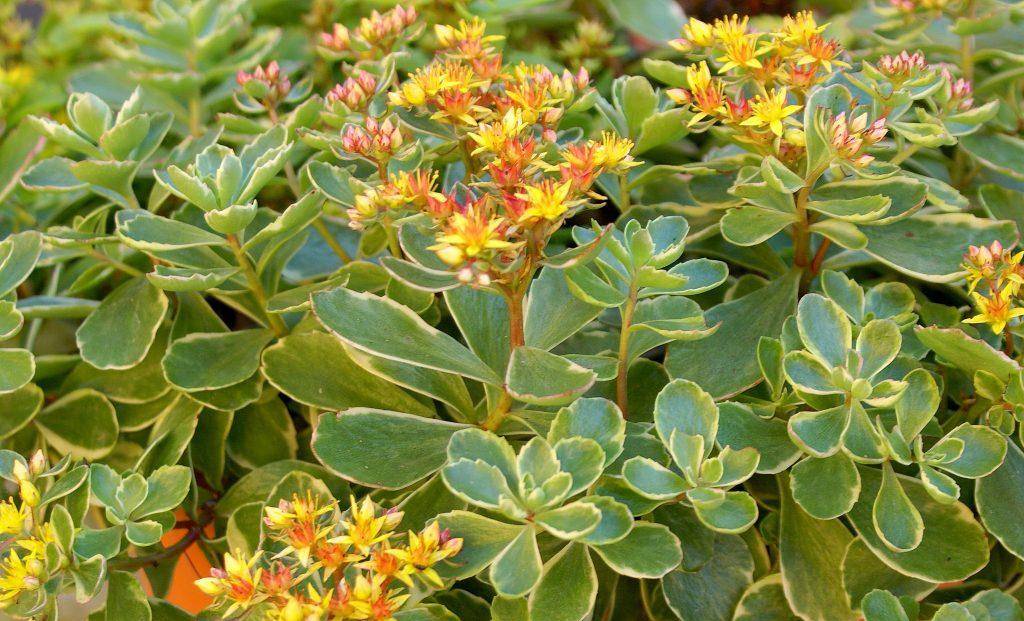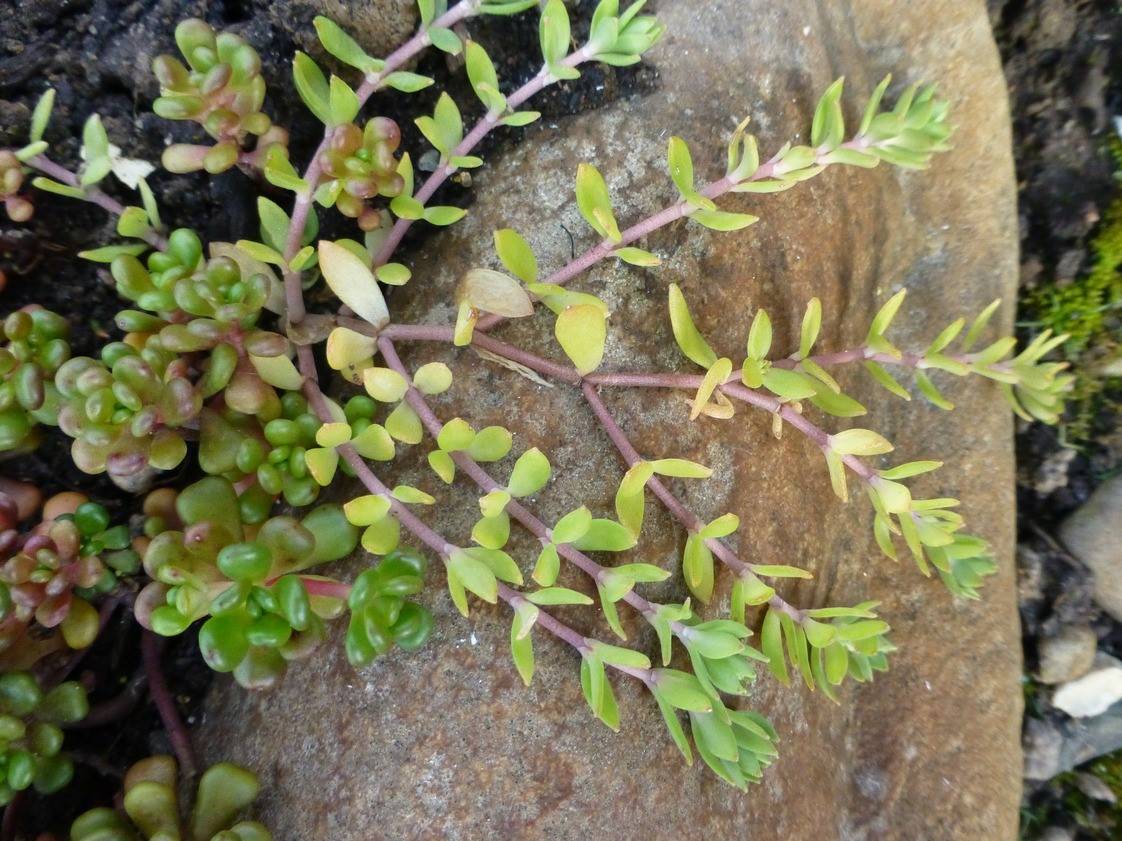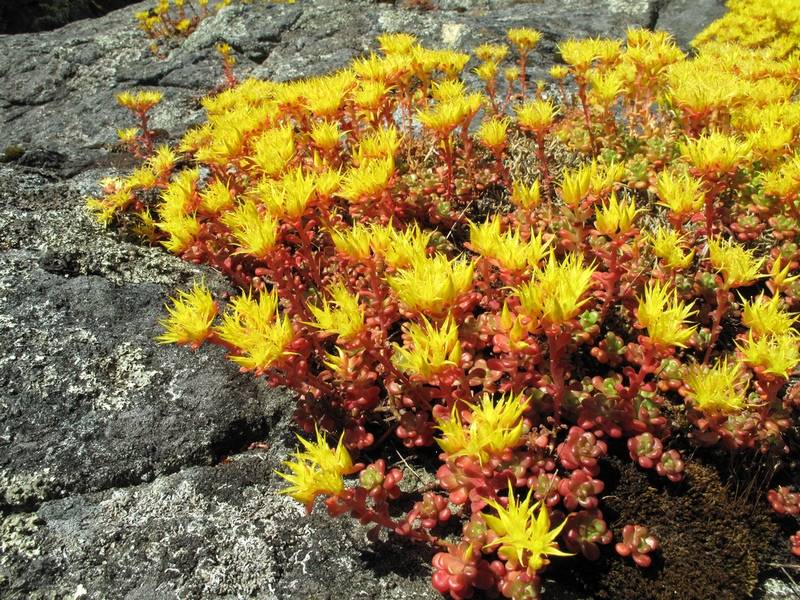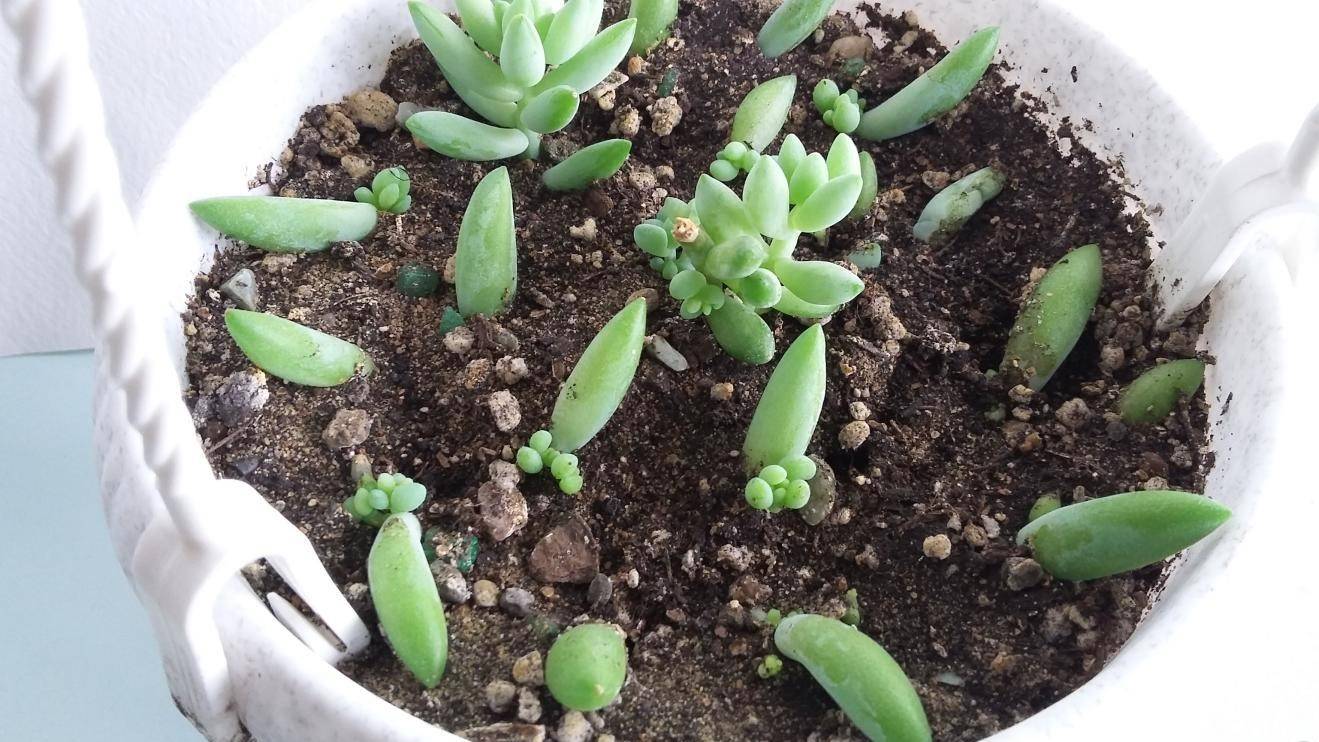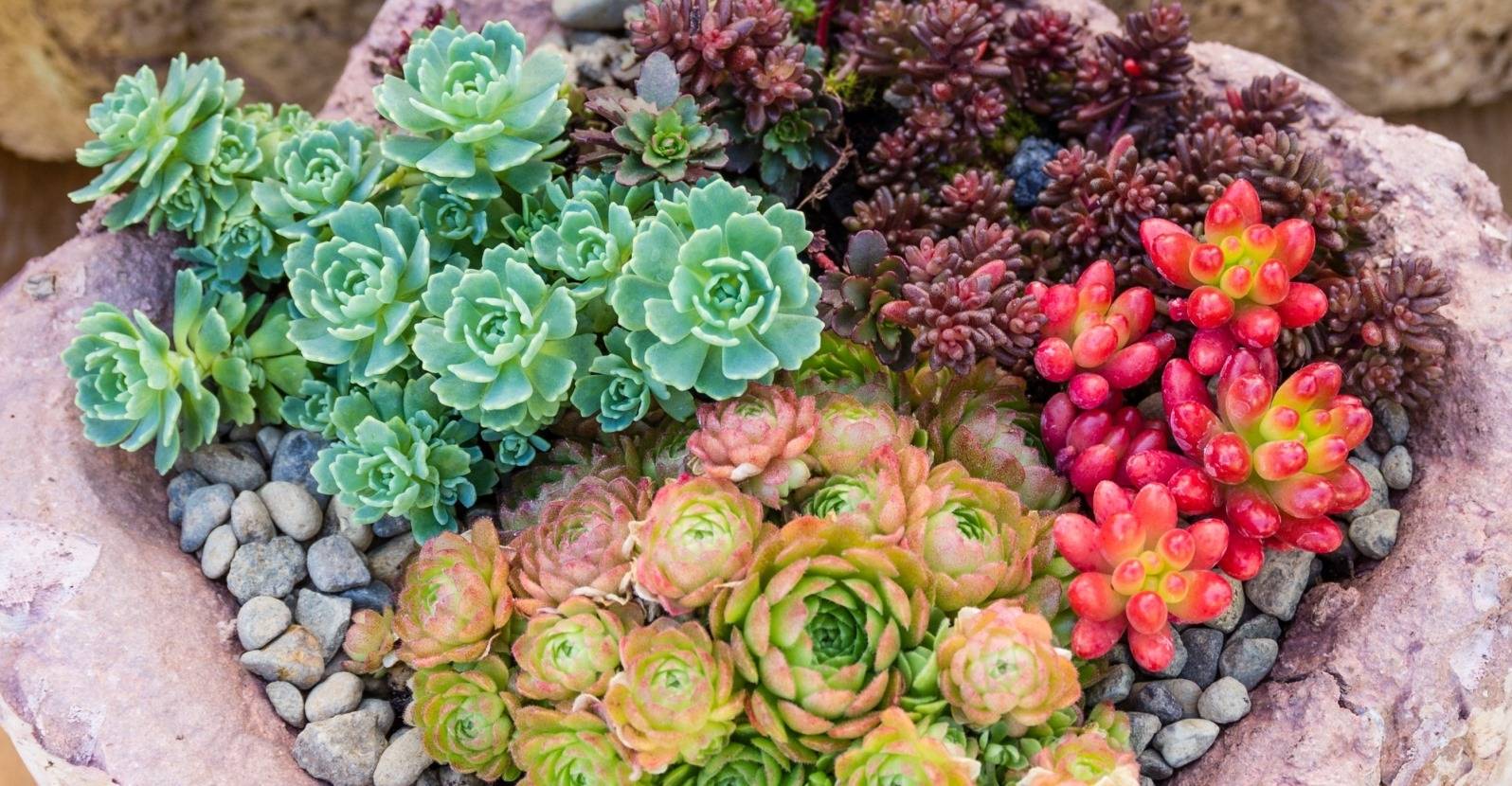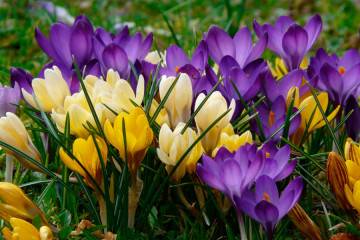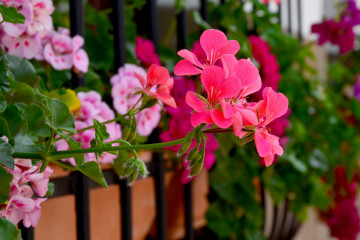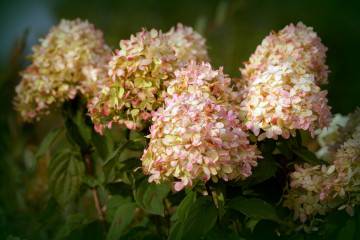Sedum varieties and types - the best varieties for the garden
Content:
- What is sedum and what does it look like
- Ground cover (creeping) sedums and their varieties
- The best varieties of tall sedums
- Popular unpretentious types of sedum
- Rare types of sedum
- Types and varieties of heat-loving stonecrops
- Breeding of decorative sedums
- Sedum care in the garden
- Growing problems
- The use of sedums in landscape design
Common sedum, varieties and types of which are diverse, is distributed throughout the Eurasian continent and on other continents. It is a resilient plant that can adapt to climate change and different soil properties. It is found both in nature and in gardens and apartments.
What is sedum and what does it look like
Sedum (also known as sedum) is a plant from the numerous Tolstyankov family. Herbaceous succulent. Most species are perennial, but there are biennials and annuals.
Why is it called so
The Latin name Sedum comes from the word "sedare", which means "to pacify". The second version is the origin of sedere, "to sit", as the plant is adjacent to the ground. The Russian name comes from the Ukrainian "cleansing" - what is used to cleanse wounds.
External characteristics
The types of sedum are varied. It is herbaceous, semi-shrub, shrub. Prefers dry soil of mountain slopes and meadows.
Succulent leaves are distinguished. They have a fleshy structure, no petioles, branched stems. Depending on the composition of the water, the soil, the abundance of the sun, the leaves may turn red or acquire reddish-pink streaks, veins.
Healing properties
The plant contains many valuable substances. These are alkaloids and flavonoids, coumarins, tannins and other medicinal substances.
Tinctures, decoctions are prepared from it, extracts are obtained. They are used as tonics, diuretics, laxatives, pain relievers, and treat inflammations. Sedum preparations get rid of burns, scurvy, nervous ailments, gout and atherosclerosis.
Ground cover (creeping) sedums and their varieties
Sedum ground cover creates a kind of carpet on the ground, spreading over the soil itself. They are also called lodging.
Sedum Anacampseros
Recently isolated in another genus - sedum, but among the people it remained a sedum.
Differs in round thin leaves, which are brownish in spring and green in summer. The stems grow up to 30 cm in length.Blooms from June, medium-sized flowers are purple, and inflorescences are loose, rounded. He loves light and limed soil, does not tolerate drought, watering is needed.
Sedum cornflower blue
Grows in bushes. Leaves are bluish thick with red specks. It blooms in late summer, the flowers are bright pink. Prefers moist, warm soil.
Sedum hybrid
The stems are creeping, the leaves are not thick green, and the flowers are light yellow. The inflorescences of the hybrid stonecrop are rare, appear at the end of summer.
Thick-leaved sedum
An evergreen variety. The stems are creeping, and the leaves are thick, collected in dense groups. The height of the plant is average, not more than 20 cm. The color of the leaves is rich green or bluish, flowers are pastel pinkish.
Siebold's sedum
Variety with green leaves of medium thickness. In home gardens, they are often decorated with alpine slides. Peduncles rise above the main stems; Siebold's flowers are yellow.
Kamchatka sedum
Forms low bushes about 25 cm Leaves are usually green, but with an abundance of light they turn red. Stonecrop of Kamchatka has yellow and orange flowers, after which small scarlet fruits remain. The flowering period is from mid-summer to September.
Sedum kuril
Perennial with oblong thin leaves. Stem height up to 10 cm. Leaves are rich green color, yellow flowers, give red fruits. Blooms throughout the warm season.
Sedum lanceolate
Its height is no more than 12 cm. The foliage is gray or bluish, but the plant turns red if it receives a lot of light. The flowers are always yellow, appear from the beginning of June.
False sedum (Spurium)
Leaves are ovoid, forming dense rosettes. Their color is green, in places reddish. Bright crimson inflorescences rise above the creeping stems. Stonecrop blooms all summer. Differs in frost resistance. Popular with landscape designers.
Sedum spatulate
The height of the stems is about 10 cm, the leaves are thick, slightly curved. The color is bluish, from above they seem to be covered with a silvery-white bloom. The flowers are yellow, they bloom in May.
Sedum multistem
The stems grow 7-10 cm, the leaves are thick green, and the medium-sized flowers are pink. Does not welcome waterlogged soil and cold. Blooms at the end of summer.
Bird sedum
The leaves are small, but thick, densely covering the stem. Usually green, but if there is a lot of sun, then they turn red. For this reason, avian sedum is red in summer. Bush height 7-10 cm. Sensitive to soil composition.
Sedum divergent
This is a small, up to 5-6 cm, bush. The leaves are green, they also turn red in the light, but not completely. The color of the flowers is yellow, the inflorescences are modest. Sedums of this variety are resistant to cold, but cannot tolerate excess moisture in the ground.
Sedum of the Rural
Tall appearance, rises 20 or 40 cm. Leaves of medium thickness are green, lemon flowers with a green tint. Sedum Selskogo blooms at the end of summer. Often used in landscaping.
Sedum of Takeshim
It grows with creeping shoots, the length of which is 20-40 cm. The leaves are thin, light green, collected in rosettes, crowned with yellow inflorescences. Blooms in July.
Sedum thicket
Low-growing sedum, up to 5 cm in total. Leaves are juicy, turquoise or blue-green. Their beauty compensates for the gray-pink nondescript flowers. The flowering period is May-October.
Forster's sedum
It looks similar to stonecrop folded back. Creeping shoots, up to 10 cm high, grow in curls. The color of the leaves is grayish; by the end of summer, the shade becomes red.There is a variety with blue foliage - Elegans. It blooms until late autumn, but there are few flowers.
Sedum Ellacombe
Plant height is average, leaves are thick, needle-shaped and green. It blooms all summer, the flowers are bright yellow, after which orange fruits remain.
The best varieties of tall sedums
Shrub species can grow 70 cm or more. They grow on any soil, do not require difficult maintenance, so they are often planted in garden plots.
Sedum ordinary (or sedum Telefium)
He's a hare cabbage. The stems are fleshy and smooth, the height of the bush is 25-50 cm. The leaves are thin, oblong, dark or light green. By winter, the stems die off, and in the spring they grow again.
Sedum red dot
Grows in bushes 30-60 cm in height. The leaves are gray, white at the edges. The flowers are white. The flowering period is autumn.
Sedum tenacious
Stems are brown with a noticeable scarlet shade, straight, green thin foliage. Bright yellow flowers adorn the garden from June to September. The height of the bush is up to 35 cm. This sedum is called hardy for a reason, it is one of the most hardy in its genus.
Sedum prominent
It has many varieties:
- Matron;
- Stardust;
- Purple Emperor;
- Diamond;
- Frosty Morn;
- Iceberg;
- Sunsparkler and others.
Sedum Matrona, Purpl Emperor, Sunsparkler are especially common in Russian gardens.
Sedum prominent - a plant up to 80 cm tall with juicy leaves of light green, emerald or red color. Blooms throughout the warm period.
Popular unpretentious types of sedum
They are hardy, undemanding to soil and light, but their beauty is not inferior to other species and varieties.
Sedum caustic
Or Sedum acre. It is a short bush with strong fleshy stems with juicy ovoid leaves. Bright yellow flowers appear in June, but disappear by August.
The description of the sedum plant says that it is a valuable honey plant.
Popular varieties:
- Aureum, or bent (Aureum);
- Yellow Queen (Yellow Queen);
- Elegans.
Morgan's sedum
Latin Morganianum. An unusual, showy sedum with creeping stems and thick grape-like leaves that fall off easily. Their color is grayish or green, light, even whitish. The flowers are pink with prominent yellow stamens. The beauty of sedum Morgan makes it a popular home decoration.
Popular varieties: Burrito, Compact, Sedeveria Harry Butterfield.
Adolf's sedum
Shrub sedum with fleshy broad leaves. The young plant is green, the old one acquires a yellow or pink tint. The flowers of Adolf's sedum are white.
White sedum
Stonecrop leaves are white in thickness, medium green. It blooms from the 15th of July to the end of summer with white flowers. The height of the stems ranges from 5-15 cm.
Famous varieties:
- Faro Form;
- Coral Carpet;
- Murale.
Sedum pale yellow
Stems are squat, leaves with a slight bluish tinge. It can rise 15 cm above the ground, and the peduncles are much higher, up to 30 cm. The flowers are yellow, they bloom in July-August.
Sedum spanish
It grows with a mat 5-10 cm in height. Leaves can be pale green, pinkish. Also, this sedum is yellow. The flowers are white or pink. Blooms actively in the middle of summer.
Sedum Middendorf
Leaves and stems are characteristically green with a reddish tint. Flowers are yellow with an orange core. If there is a support, it rises by 25-30 cm.
Varieties of Middendorf sedum - Striatum, Diffusum.
Sedum bent (rocky)
Considered to be perennial sedums. A herbaceous variety that is medium in height. Leaves are thin, long, greenish-yellow in color, sometimes with a blue or crimson tint.The flowers of stonecrop are yellow, bloom from June to July.
Sedum sedum
Grows in low bushes with long peduncles. The leaves are bluish, dark, the flowers are yellow. It is necessary to provide adequate lighting, survives drought.
Trifoliate sedum
Low, 7-15 cm, bush with green flat leaves. It grows in a dense carpet. The flowers are white, they look like stars, they bloom in May.
Sedum narrow-spotted
Low, up to 20 cm, sedum. The leaves are green or reddish of medium thickness, the flowers are scarlet.
Loves bright light and tolerates low temperatures well.
Sedum hexagonal
A low-growing sedum, only 5-7 cm tall, peduncles 10-15 cm. The color of the leaves is green, on the stem they are scattered, spirally. The flowering period is mid-summer. The flowers are yellow.
Sedum Evers
The stems of the plant are straight and long. Rounded thick leaves are bluish, cast red at the edges, covered with a whitish bloom. Small pink flowers.
Note! Evers' sedum is not afraid of frost, but he does not tolerate abundant watering.
Rare types of sedum
These plants are not widespread, but they deserve attention.
Sedum graceful
It forms a low rug, its height is only 3-4 cm. The leaves are small, but thick, their color is green, and the buds are pale pink. It blooms from early to mid-summer, successfully survives the winter.
Sedum vine-shaped
Shade-tolerant sedum, which grows up to 10 cm. Stems and leaves are green, but gradually turn red in bright sun. The flowers are colored deep yellow. Grows in bushes without creating a hard carpet.
Escaping sedum
Forms a cover on the ground, above which flower stalks rise (by 20 cm). The leaves are pale green, the flowers are light lilac or pink. Shoots branch. Flowering lasts from June to August.
Other types of rare sedums:
- Lydian;
- Albert;
- poplar;
- Tatarinov;
- Troll.
Types and varieties of heat-loving stonecrops
They love the sun, but winter badly, so they are suitable for southern regions or indoor keeping.
Sedum linear
Stems lodging, branching, root easily, reach 30-40 cm. Leaves are green, whitish or emerald, grow 3 pcs. (whorled).
Sedum Makina
It grows with a low rug, almost does not rise above the ground. The leaves are green saturated, the flowers are gray, but so small that they are almost invisible. It tolerates a long absence of moisture and is not sensitive to the composition of the soil.
Sedum polychaete
Sedum with burgundy-brown stems and thickened needle-like leaves. It grows by an average of 10-12 cm, blooms actively, peak in late summer. The flowers are inconspicuous.
Not only cold, but also excess moisture is badly experienced.
Sedum oregon
One of the brightest types of stonecrops. Stems and leaves are fleshy green or dark red. It blooms profusely from the middle of the summer season, the flowers are large yellow-orange.
Sedum salivary
The height of its stems is up to 10 cm, the leaves are dense greenish-gray of medium thickness. Flowers are white with dark specks of stamens, bloom in June.
Sedum pretty
This sedum is an annual flower. Grows in bushes 10-15 cm tall. Leaves are thick, juicy green with a pinkish tint. The flowers are pink or white. The flowering period is late summer - early autumn.
Breeding of decorative sedums
Any sedum can be propagated in three ways:
- seeds;
- shoots;
- dividing the bush.
Seed propagation
The seed is taken from dried fruits. They are planted in pots (clay or ceramic) in late autumn, but can be planted in open ground in spring.
The substrate is prepared from ordinary earth, sand and compost in equal parts. The soil is well watered, the seeds are placed on the surface and a little sprinkled with soil.
Reproduction by shoots (cuttings)
Carried out in autumn or spring. Take shoots from 5 cm long and drop them in moist soil. Leaves are also suitable for reproduction; they take root quickly and successfully. They are planted the same way.
Reproduction by dividing the bushes
In autumn, and if necessary in spring, the plant is dug up, then divided into parts. Living kidneys are left in each. After that, new sedums are planted in the ground, preferably sandy.
Before planting a succulent in pots, drainage is made from pebbles, you can take a brick or expanded clay.
Sedum care in the garden
Sedum is an unpretentious plant, but it needs to be weeded often, while the soil at the roots is loosened. Water only in the heat, when there is no rain for a long time.
Cultivated species are fed in autumn and spring. Chicken droppings are used (solution 1:20) or mullein infusion (1 part infusion to 10 parts water). For mulching, take tree bark, small stones.
In winter, plants are pruned, thermophilic sedums are covered with straw, wood shavings, and spruce branches.
Growing problems
Sedums are hardy, but in bad conditions they die and get sick. Pests are especially dangerous:
- thrips;
- sawflies;
- common aphid;
- any caterpillars;
- nematodes.
Fungal infections are dangerous for milkweed. The only salvation from them is trimming the leaves, on which dark spots have appeared.
With improper care, they note:
- decay of roots;
- drying of leaves;
- lethargy shoots;
- stretching the plant in height.
The use of sedums in landscape design
Sedums are indispensable for creating lawns, alpine slides, curbs, paths and vertical surfaces.
One of the main properties of sedum is that it is effective at any time of the year, so it is used in gardens where other plants lose their beauty in the fall. Stonecrops are especially popular purple, yellow, bluish. Combining them, they create amazingly beautiful combinations.

